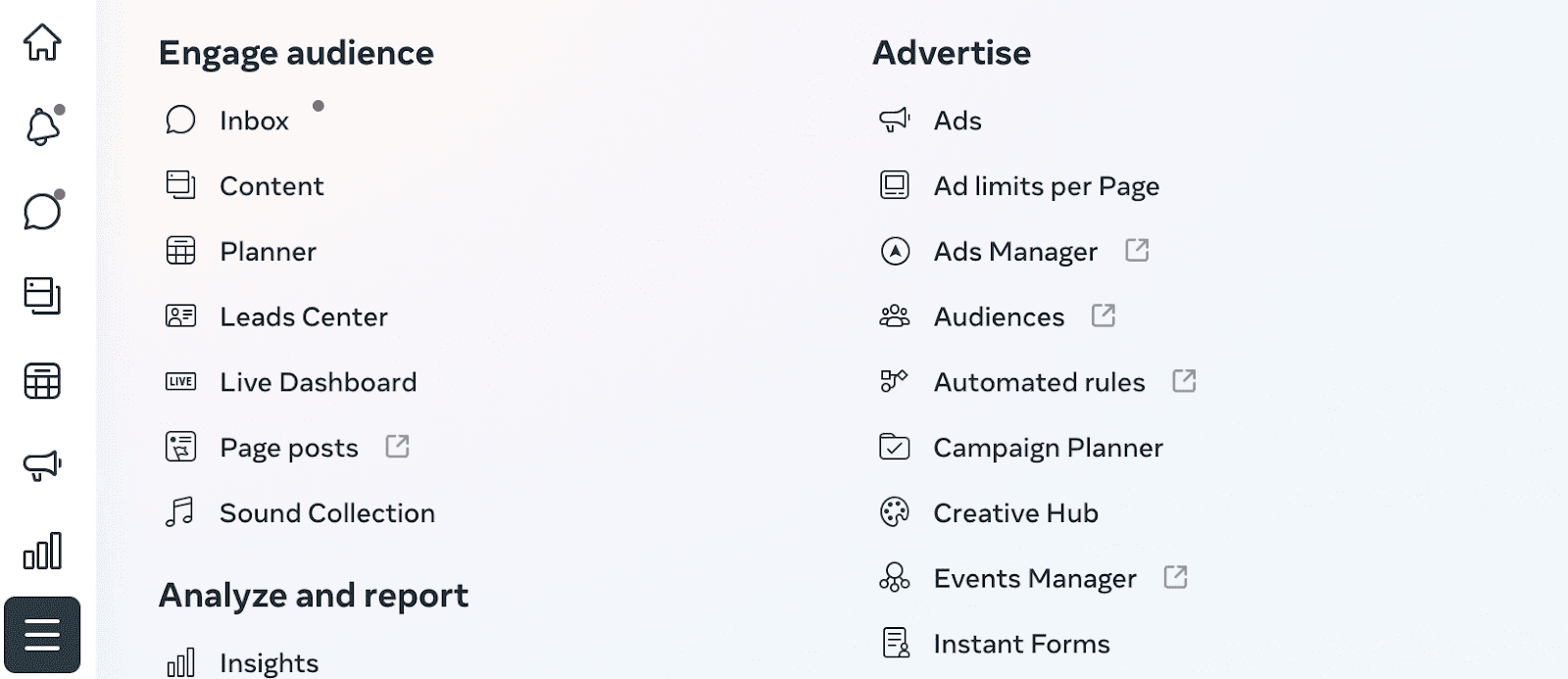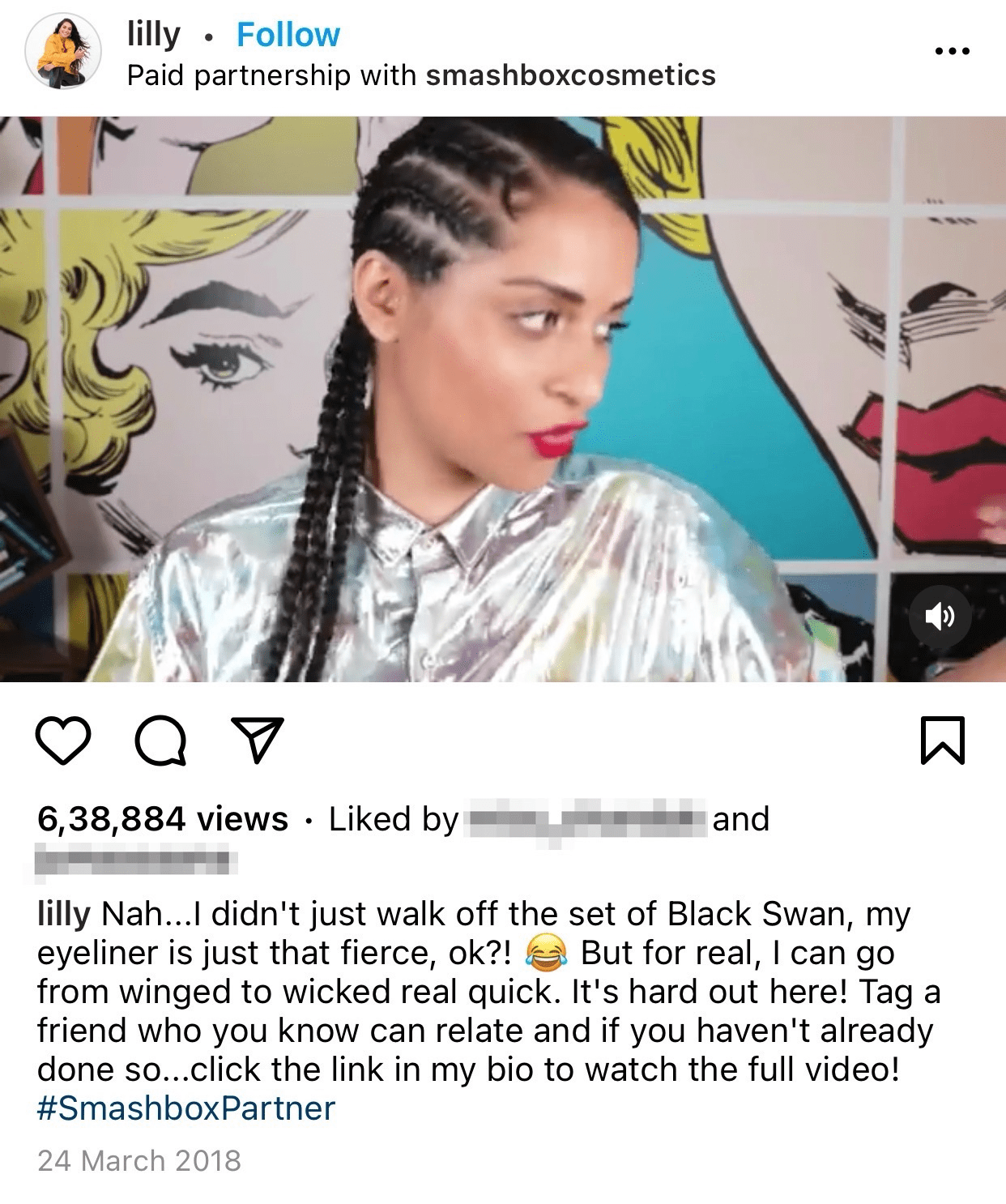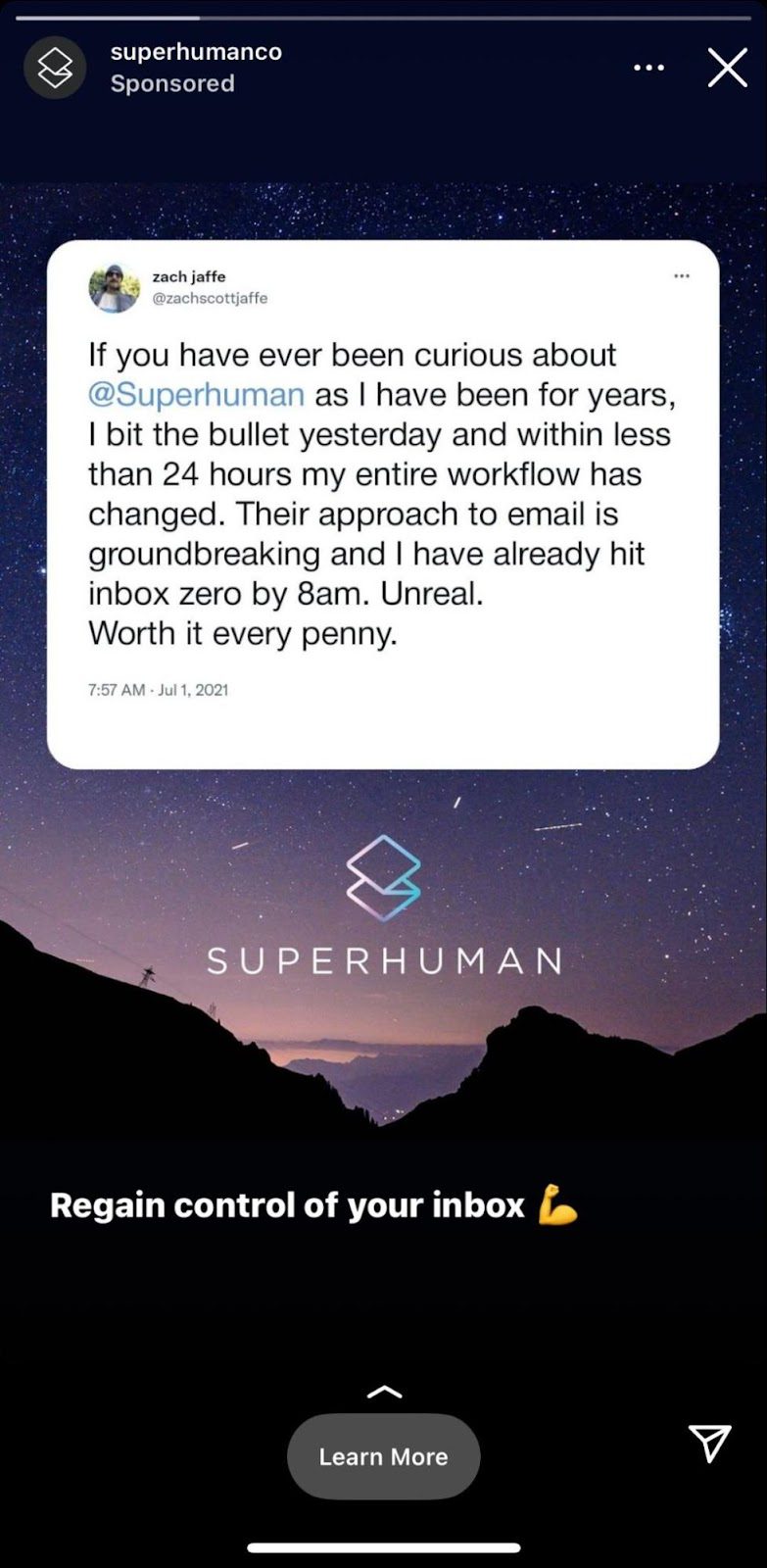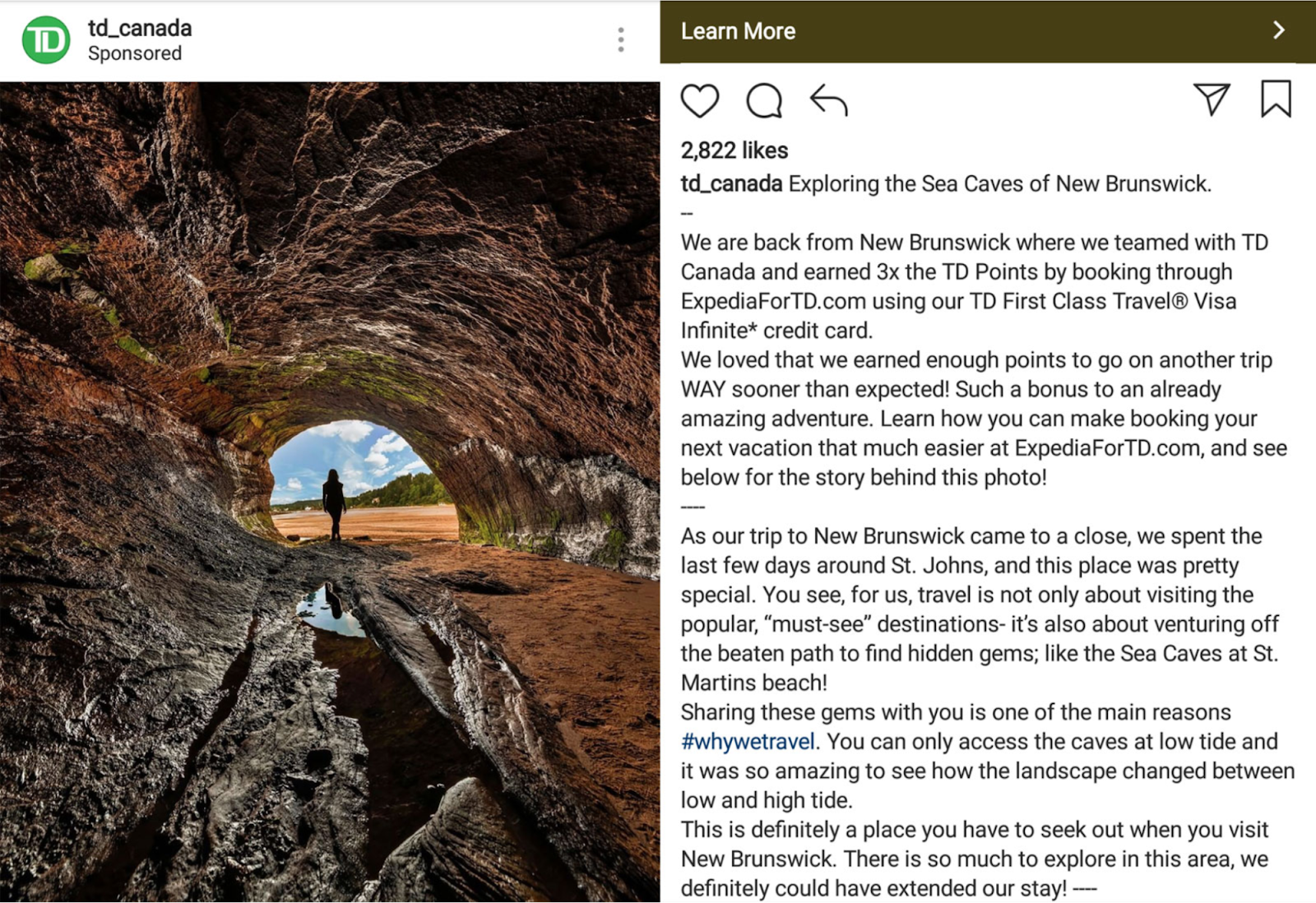Instagram's tremendous growth over the last two decades is super impressive. It's like it strapped on a super-powerful jetpack and went from 0 to $32 billion+.
That's billion with a “b,” guys.
Businesses know they cannot ignore Instagram if they want to drive brand awareness and conversions. That's why everyone wants to dive headfirst into the world of Instagram ads.
But!
Showing up on the platform doesn’t guarantee a successful outcome for your Instagram ad campaigns.
You need a solid social media strategy—one that effectively showcases your products and targets people to create genuine interest.
The average Instagram Ads cost depends on the bidding model. For instance, under the cost-per-click or CPC model, Instagram advertising costs range between $0.5 to $3 for competitive industries (fashion, home). But under the cost per thousand or CPM model, costs rise to $6.70 per 1,000 impressions.
At the same time, businesses usually run more than one ad, which makes it tricky to calculate total ad spend based on CPM alone.
The main question is how much should a business spend on average to get the desired results?
TL;DR
- How much does an Instagram ad campaign cost?
- Benefits of using Instagram ads
- What factors should I consider when running Instagram ads?
- What are the best targeting options for Instagram ads?
- What are the most popular Instagram ad formats?
- 8 best Instagram ad tips to master Instagram marketing
- Improve and grow your brand through Instagram
Get brand new Facebook ad strategies straight to your inbox every week. 23,739 people already are!
Benefits of using Instagram ads
Databox found that 52.63% typically spend under $5,000 on Instagram every month, regardless of their industry. Respondents who claimed to spend more than $50,000 on Instagram (10.53%) were all tech companies and agencies who probably have combined budgets from different clients.
52.63% of businesses spend under $5K on Instagram advertising –
There are more than 200 million business accounts on Instagram. The fact that its ad revenues can potentially reach $32 billion by this year confirms that marketers know Instagram's worth the money.
The main reason behind this is visual media is a far more useful platform for engaging target audiences than other traditional online social media marketing channels. Let's take a closer look at why Instagram advertising makes sense for businesses.
1. People LOVE Instagram
This may sound like we're overselling the platform, but believe us, we aren't.
On average, people spend about 145 minutes on social media every day. This gives you plenty of opportunities to talk with your customer base—and the more opportunities you have, the more likely they are to purchase from you.
2. Instagram's massive growth
Besides business accounts, Instagram has also seen massive growth in the number of user accounts. This means advertisers can reach out to potential customers and scale sales through Instagram ads.
3. Tons of targeting options
“Connect with your target audience.“
We've heard this statement for ages, which is why identifying the specifics of your audience is so important.
When you create Instagram ads, you specify your audience location, demographics, interests, behaviors, and more. This allows you to make your first contact with people who might be interested in your products and target people who have already purchased from you—talk about efficiency.
Oh, and now that Meta owns Instagram, you enjoy the same advertising abilities and power in the Meta Ads Suite that you would with Facebook ads exclusively. This means you get additional audience data and more effective ads. It’s a win-win-win.
What factors should I consider when running Instagram ads?
Here’s a quick list of factors every business owner or marketer should know before kicking off their Instagram ad strategy:
1. Prerequisites
Surprising? Not really. Like any arm of marketing, there are a few prerequisites you need to meet before running Instagram ads.
First and foremost, you'll need your own Facebook page. You’ll also need an ad account. Not only will this give you an exclusive platform to run your content, but you can also enjoy the features of Facebook Ads Manager once you link your Facebook page to your Instagram account.
2. Campaign objectives
Similar to Facebook ads, you can choose from several objectives when running your Instagram campaign. Think about what you want from your ads campaign and select an objective accordingly.
Here's a brief explanation of each category:

- Brand awareness: Allows your ad to reach out to people that will most likely pay attention to your campaign or have previously shown interest in your brand
- Sales: Encourages more people to use your business website or application while tracking and measuring convergence
- Traffic: Increases the number of visits to your link, as well as the amount of engagement for in your application
- App installs: Directs more people to your app's App Store or Play Store link to increase the number of downloads
- Engagement: Gets more people to engage with your post-ready Instagram page, which also helps boost your posts and profile promotion
- Leads: Helps collect more social data or lead information about your audience or people with a genuine interest in your business
3. Defined target audience
Every Instagram ad campaign should have a target audience.
If you’re not sure what yours is, use a social media analytics tool to identify the right audience for your campaign. This will give you access to valuable data—audience interests, behavior, and demographics—for smarter decision-making. For instance, you can decide whether you want to make your target broad or specific through Facebook Ads Manager.
Your targeting ultimately is dependent on what you're trying to accomplish with your campaign and resources. When you target your audience on a granular level, you can filter the group of people that see your Instagram ads. On the other hand, when you target broadly, you rely on Facebook's delivery system to show your ads to the best people. Both marketing strategies work. In the end, it all boils down to your personal preference and budgetary needs.
5. Budget
No surprises here! You should know how much you're willing to spend on an ad.
We can't tell you how much your budget should be for each ad set, but you can consider the goals you want to accomplish from your campaigns and use them to determine your budget.
For instance, if you're optimizing for purchase conversions from an audience with high intent and know your estimated revenue from the sale, you can set a maximum budget for your paid ad campaign. Or, if you have flexibility, you can let Meta automatically optimize your ads using Advantage+ Campaign Budget tools.
6. Timing
After you consider all this, you’re going to have to decide when you want your ad to run on Instagram and for how long once it's approved.
If you schedule the ad to run upon review approval, users will start seeing it as soon as it gets the approval. You can choose a start and end date or you can have it run until you choose to turn it off.
Be aware that if you're planning to run your ads during a holiday that costs will (usually) rise—Black Friday especially. Sometimes brands with lower budgets can't compete during these times, so it helps to shift your timing and budget focus to launch right before the big holiday.
7. Engagement
Instagram has better engagement numbers when compared to other social media platforms, even TikTok.
This is likely why running ads on Instagram costs more than on other platforms. But when you consider the amount of engagement and conversion it generates, Instagram ads are certainly worth the investment.
What are the best targeting options for Instagram ads?
If there's anything key to achieving success with your ad campaign, it's Instagram ad targeting.
Instagram ads targeting work the same way as Facebook ads. To create and manage your Instagram target audiences, you'll have to use the Facebook Business Manager. Open your Business Manager extended menu and then select Audiences from the top-right menu.

Instagram ads have three main audience types:
- Saved audiences
- Custom audiences
- Lookalike audiences
Let's discuss each audience type in more detail below.
1. Saved audiences
If it's your first time dappling with advertising on Instagram, you should start by creating a saved audience.
Here, you can define your target audience by choosing specific factors, such as:
- Location
- Language
- Age
- Gender
- Demographics
- Behavior
- Connections to pages
Create Saved Audiences both in the Instagram campaign set up face or in the Business Manager's Audiences section.
2. Custom audiences
Out of all the ad targeting options, custom audiences are the most high-value Instagram target audience. This audience type lets you retarget past website visitors and people who have previously engaged with your Instagram posts.
Plus, there are several ways to set up an Instagram retargeting audience. You can create custom audiences:
- From customer files—the list of email accounts, app IDs, and phone numbers
- Based on website traffic, but you'll have to install Facebook pixel for this to work
- Based on app activity, where you can reach out to people who have engaged with your Instagram app
- Based on engagement
3. Lookalike audiences
Creating lookalike audiences allows you to contact people who are similar to your existing customer database, making them more likely to convert.
To create a lookalike audience and target it with your Instagram ads, you have to first create a custom audience to tell Facebook what kind of users you want to reach. That's Step 1. Then, you follow the on-screen prompts to customize your lookalike audience to your preferences.

Lookalike audiences also help extend your ad campaign's reach by focusing on only targeted people who are likely to be interested in your offer.
1. Images
Image ads are one of the most widely used ad types for both Instagram and Facebook advertising. It’s typically made of an image, ad copy, and a call-to-action button.
When to use:
We recommend using single-image ads if you already have quality visual content and want to get up and running quickly, or when you want to retarget customers.
Supported objectives: Reach, conversions, traffic, lead generation, app installs, post engagement, brand awareness, product catalog sales, store visits
- Caption: up to 125 characters
- Media type: image
- Recommended image size: 1440 x 1440 pixels
- Image format: .jpg or .png
- Maximum file size: 30 MB
2. Videos
Video ads allow you to introduce your offer with a video or vlog. Their moving nature is more effective in catching up a user's attention when they scroll through their Instagram feeds than other ad formats.
When to use:
If you have the time to create video content, you should 100% be testing video ads on Instagram. These are excellent to explain how your product works or share a fun and engaging message about your brand.
Supported objectives: Reach, traffic, conversions, brand awareness, lead generation, store visits, post engagement
- Caption: up to 125 characters
- Ratio: 4.5
- Recommended resolution: 1440 x 1880
- Length: Minimum 1 seconds, Maximum 60 seconds
- Maximum size: 4GB
3. Carousels
Carousel ads let you showcase up to 10 images or videos in a single ad. You can recognize a carousel ad when you see a series of small dots under the image, indicating there's more than one image to be seen.

When to use:
Opt for carousel ads to create a step-by-step illustration of how to use your product or service, tell your brand's story, provide a good sense of the essence of a promoted offer, and lower Instagram ads cost.
Supported objectives: Reach, conversions, traffic, brand awareness, product catalog sales, lead generation
- Caption: up to 125 characters
- Media type: image or video
- Image format: .jpg or .png
- Number of cards: Minimum 2, Maximum 10
- Aspect ratio: Image and Video 1:1
- Video length: Minimum 1 seconds, Maximum 2 minutes
4. Flexible
- Flexible ads allow marketers to rely on the “magic” of the Instagram algorithm to choose ad delivery methods that are more likely to convert with your audience, depending on what they’ve responded to and engaged with so far. Any and all ad types are up for grabs when you choose the Flexible ad format, including image, video, and carousel-style ads.
Finally to the main part!
Instagram advertising can be easy—provided you get off on the right foot. You need to post the right content to stay relevant to your followers while also bringing in fresh, attractive posts.
Now that you’re off to the races, here are eight ad tips to maximize results from your advertising efforts:
1. Check off the five W's
When creating Instagram ads, you should answer the 5W's: who, what, where, when, and why. This will make your ads as clear as possible and help boost post engagement.
Let's decode each W in more detail below.
- Who: Tell viewers about your brand or your product or service
- What: Give a clear description of your offer. If you sell swimwear, be direct and tell viewers your sell swimwear clearly
- Where: Tell people where can they buy your products from
- When: Present an opportunity to viewers to place their orders. For instance, ‘Buy now‘ serves as both a CTA as well as an answer to ‘when.‘ You can also mention a time frame if you're running a limited period offer: “Buy before 25th December”
- Why: Give your audience a reason to purchase your product and not your competitors. Talk about your distinctive features, perhaps even a discount offer, or anything that your competitor lacks
Besides the above 5Ws, you also want to end your ad with a solid CTA. Aim to push your customers' desires right up.
2. Swap commercialized imagery for motion-based visuals
Visuals are everything on Instagram. You need images and videos that can stand out and instantly attract your audience's attention. Anything poorly designed, overly commercialized, or over used isn't gonna cut it.
That’s why we strongly recommend using motion for your Instagram ads, as movement helps prime audiences emotionally. Your audience is also more likely to engage with a creative that moves rather than static imagery.
But don’t worry, your ads don't have to be full-fledged and elaborate videos. You can turn a GIF into an Instagram send the video. Simple stuff works.
You can also experiment with carousel ads, which is essentially motion that happens on the user's side when they scroll through the carousel. Be sure to use a series of high-quality and relevant images to keep them swiping.
3. Tell a story through your video ads
Audiences love good storytelling. But when it comes to Instagram advertising, having a clear and compelling story isn't enough—you only have a few seconds to win them. That’s why you want a story that addresses their specific pain point, ideally in a catch hook. Only then will you strike a chord and get them interested in what you have to sell.
Remember: People buy solutions based on their problems, so if the problem gets them annoyed or agitated, your product should give them a sense of peace. Don’t leave them hanging. Here is the formula that you can use:
Problem + Solution = Transformation
According to our experience, video ads with an infectious energy work best in keeping the viewers hooked to the last second. You want to communicate the value of your product in a way that makes them go: "Oh yes, I can see myself using this."
Get it?
4. Use trending audio and visuals when creating Instagram ads
You can make the most out of Instagram ads by following one simple piece of advice: use trending audio and visuals to bank on what people are already loving—and give it your own spin.
Giving it your own, unique touch is important here. There's a fine line between being seen as "hip and trendy" vs being seen as "too try-hard." That's why, while many brands use trending audio and memes, they make the ads in a way that still matches their brand's style.
5. Focus on your audiences' preferences and requirements
Your audience's behavior and actions can tell a lot about what they want to see. You can use insights from your social media analytics to learn the kind of content your target audience wants to interact with.
Don't simply guess the type of voice or content your customers may find interesting—back it with cold, hard facts.
We highly recommend using at least 10% of your budget to test different creatives and ad types in the beginning of your Instagram ad campaign. That's the only way you'll have genuine insights into your targeted customers' preferences, which you can then apply to maximize your efforts.
6. Partner with influencers for a better-targeted reach
Instagram and influencing have become (almost) synonymous.
Why?
Because people are open to buying products or services based on what they see in their feeds from the influencers they follow. That's because they trust these influencers.
You can use this influence and make it work for you by getting your brand out in front of your chosen industry influencer's followers.
Before you sign any contracts, though, try to identify influencers with an audience similar to whom you want to target. If top influencers are out of your budget, reach out to the more affordable micro-influencers to post about your product or service and influence more people to buy your stuff.
And it doesn’t stop there.
After paying an influencer to post about your product or company, you can run ads using the content they create AND/OR run the ads from their profile. Doing the latter will make it seem the ad is from the influencer and not from your brand, which will help with optics.
Here's a well-known example of cosmetics giant Smashbox partnering with Lilly Singh, a former talk-show host and popular comedian, to promote their eyeliner to her millions of followers on Instagram.

Sometimes your fans can be your best resource.
With permission, many companies collect and post user-generated content (UGC) that highlights whatever you're selling to use as your ad creative. Most likely, the UGC will look more authentic to Instagram, helping your brand to blend in like a friend while also helping your product to get noticed.
For example: Superhuman cleverly uses a tweet from a customer talking about how it helped streamline his workflow. Not only does this give you content for an excellent ad, but it also helps establish social proof. Viewers have more incentive to give your product or service a shot.

Here are a few pointers to keep in mind if you decide to post user-generated content in your Instagram feed:
- Always, always, always ask for consent to use a person's content in your ads
- How big of a following does the person whose image or video you want to share have? If it's a big influencer, they'll most likely require financial compensation. Content creation might be their full-time job afterall. But no biggie if they aren't in the Million Followers Club. It would still be nice to offer that person a promo code or free product if you can.
- Is the image or video relevant to your brand image? Does it match what you've already created or are trying to create? Don't post if the image or video goes against it.
- Is the photo appropriate for your current audience and following? Look for signs of anything that can be potentially offensive.
This sounds super confusing, but hear us out.
If you ask experts about the best Instagram ads, chances are they will tell you about ads that don't look like an ad—all they are are beautiful videos or photos with a fun backstory.
Take this ad from the TD Bank, for example.

While TD Bank wants to promote their travel forecast credit card, they use a beautifully shot image of New Brunswick for their ad, complete with a simple line: Exploring the sea caves of New Brunswick.
No logo, tagline, or commercialized image.
Thanks to its authentic feel, 2,822 people love the photo. This shows how well the ad works to boost engagement and brand awareness and maybe even get the company a few new followers.
Improve and grow your brand through Instagram
Say it with us: You can make Instagram work for your brand.
All you have to do is focus on familiarizing yourself with the platform and apply the above best practices to build (or grow) your audience and take your Instagram page to the next level.
To see practical examples of how things are done, check out our carefully compiled list of the best Instagram ads for some inspiration. Observe, get inspired, and watch your brand grow!
If you need any help with your Instagram ad campaigns, reach out to us for help.
At KlientBoost, we offer broad-level as well as granular services to help you maximize ROI from your paid ads on Instagram. From one-time audit to ad set-up to total management or consulting, we do it all. Connect with us today to learn more.
1. Crafting Visual Content that Converts
The visual-first nature of Instagram demands content that stops the scroll. Your ad creative should align with platform aesthetics while maintaining brand consistency, whether you're using single-image ads, carousel formats, or video content to tell your story.
2. Scaling Your Instagram Ad Performance
Moving from initial campaign success to consistent performance requires strategic testing and optimization. Understanding how to interpret engagement signals, adjust targeting parameters, and refine your creative approach ensures sustainable growth in both reach and conversions.
3. Maximizing Return on Ad Spend
Optimizing your Instagram ad investment involves more than just setting budgets. Success depends on understanding bidding strategies, analyzing competitor activity, and timing your campaigns to align with peak engagement periods while avoiding cost-intensive seasons.
FAQs
How do I set up my first Instagram ad campaign through Meta Ads Manager?
To start advertising on Instagram, connect your Instagram account to the Meta Ads Manager (formerly Facebook Ads Manager). Your Instagram account is a business account and be linked to your Facebook page. Log into Meta Ads Manager to create your campaign. Choose from different Instagram ad formats, including Instagram story ads, Instagram video ads, or regular Instagram posts. The platform will guide you through selecting your target Instagram users, setting your budget, and choosing your call to action.
What Instagram ad formats perform best for engagement?
Among the various ad formats available in Meta Ads Manager, Instagram video ads typically generate the highest engagement rates with Instagram users. You can create these through the Instagram ad manager by uploading videos directly or repurposing content from your Instagram posts. For best results, use the Instagram app to test different types of video content before promoting them. Whether you choose Instagram story ads or in-feed video ads, make sure to include a clear call to action that resonates with your audience.
Why isn't my Instagram ad showing up after creating it in Facebook Ads Manager?
If your ad isn't displaying properly, first verify that your Instagram account and Facebook page are correctly linked in Meta Ads Manager. Then, check that you've selected the proper ad format and placements for your campaign. Common issues include incorrect Instagram ad formats, improper image dimensions, or targeting settings in the Meta Ads Manager (formerly Facebook Ads Manager). Make sure your Instagram account has the proper permissions and that your content meets the platform's guidelines. If problems persist, try creating a new ad through the Instagram ad manager section of the platform.
